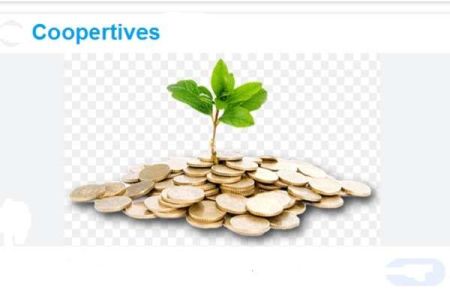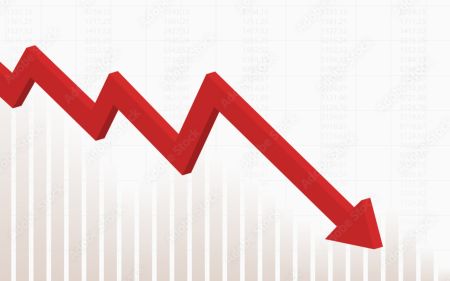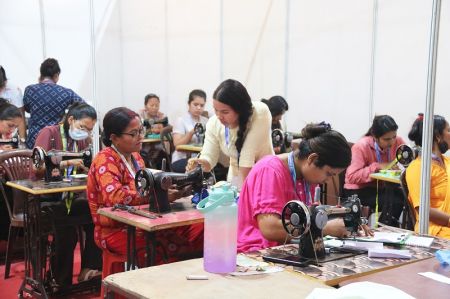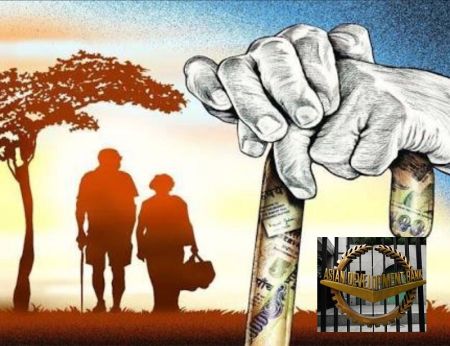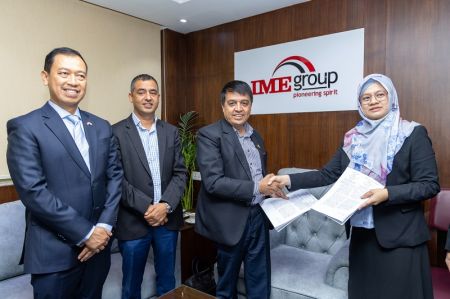--By Prof Madhukar SJB Rana
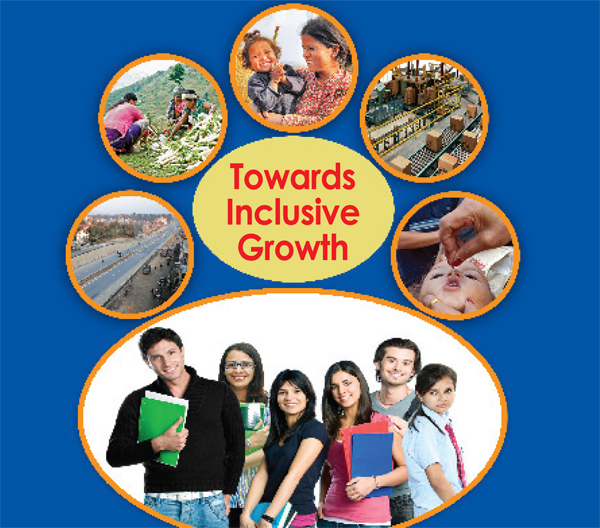
It was India’s Montek Ahluwalia who coined the phrase ‘inclusive growth” in the 1970s with the World Bank (WB) Report “Redistribution with Growth”; and later it was reckoned that $ 1 per day (currently $ 1.25 per day) as being the line of absolute poverty which had to be traversed to be pro-poor and ‘inclusive’.
Whereas Marx wanted “forced redistribution” of assets of the feudal and bourgeois classes for inclusion, Ahluwalia wanted redistribution through legal, monetary and fiscal interventions. The problem with both was that, as socialists, the concept lacked faith in the middle class as the true vanguards of democracy-- and the private sector as the true engineers of efficient and rapid economic growth and employment creation.
And so this $ 1 a day ‘absolute poverty’ thesis of Montek Ahluwalia gave birth to the Human Development thesis of Pakistan’s Mahbul Haq, which basically sought ‘inclusion’ by creating equality of opportunities for all those excluded, especially women and the girl child.
Haq pioneered the human capital revolution which got us to think of creativity and productivity as the true source of prosperity and human welfare and not the usual underscoring of the importance of natural, physical or financial capital. He got us to think of people as more than just labour. And he made them the centerpiece of development.

The Human Development Index is his lasting legacy. Haq learnt from the experience of Pakistan in the 1960s that one could have 7% GDP growth and also suffer acute inequalities and inequities to exclude the poor from the fruits of growth—and worse, exclude 50% of the population of women who needed to be empowered by the State. He also re-introduced the concept of ‘human security’ which was the foundation on which the Japanese economic miracle of the 1950s-70s occurred with little or no natural resources.
‘Growth’ and ‘development’ are related but different concepts. Growth theories apply to developed nations whereas development theories apply to underdeveloped nations mired in hunger, malnutrition, illiteracy, ill health, superstition, deprivation, exploitation and underemployment of human resources.
Inclusive Growth also refers to the need for a ‘balanced growth’ between (a) agriculture and manufacturing and (b) urban and rural areas of a nation. Thus inter –industry analysis and input-output models were developed and regional economics became a separate discipline to deal with geographic inequalities in growth. (As early as the 1970s Centre for Economic Development and Administration (CEDA) under Tribhuvan University, intellectually led by the likes of Dr Harka B Gurung and Dr Ratna SJB Rana were doing such seminal work for Nepal for regional balance by examining possible growth centres and corridors, which was waylaid by foreign aid that opted for extraneous models of development. This eventually sowed the seeds of conflict in Nepal with its over-emphasis on the role of the central bureaucracy and a Kathmandu-centric model of development. I am referring to the failed Integrated Development Projects (IRDPs) of the World Bank and the several bilateral donors working in isolation of each other to practically make the central bureaucracy their own dysfunctional and corrupt fiefdoms. It failed because it was costly and opted for decentralization rather than devolution with bottom up local leadership development with people’s participation).
In the 1980s, a new growth and development paradigm was born-- ‘sustainable growth’. It was felt that the cost to the natural environment was not being factored in by the GDP approach as the very success of growth resulted in externalities such as environment degradation, pollution of air, soil, water—one may say, development’s impact was toxic. For most of the time, growth theory was driven by concern for its pace and pattern of growth. Then comes concern for its impact on Nature. And thus was added a new dimension to ‘inclusion’ theory.

In the 1990’s, led by Nepal’s Gandhian statesman PM Krishna Prasad Bhattarai, a new concept was bestowed to the development paradigm. ‘Pro-poor growth’ was the term coined by the SAARC Independent Commissioners in 1992 (see the SAARC Secretariat Report: “Meeing the Challenge) as it began to grapple with growth models that tended to ‘walk on one foot’, as it were. Thus it emphasized Structural and Extended Structural Adjustment Programmes (SAP and ESAP) passionately underwritten by the International Monetary Fund (IMF) and the World Bank in tandem to usher economic and financial reforms since the 1980s.
The SAP and E-SAP model of growth and development ignored the contribution that the poor, especially women, could make to growth by treating them as objects of development and not the subjects. Hence the call for ‘pro-poor growth’ with Organizations of the Poor to be engaged in self help, self development and self management by designing locally based growth and development models unique to its social, cultural and ecological environments. For this to happen, it called for Social Mobilization of the Poor by the State so that they can participate in development and democracy through the mechanism of the Market. It believed that South Asia could have 9% GDP growth with 3% being contributed by the poor themselves, if it followed a strategy of walking on two legs – (a) priority to agriculture (b) development of labour intensive SMEs in manufacturing (c) human development and human security (d) social mobilization of the poor to create Organizations of the Poor to pursue their own models of growth and at their own pace as also to countervail the power of the ruling and rural elites. Its lasting contribution is the inclusion of ‘social capital’ as a viable and relevant development model where the local culture should be included, and seen as an enduring asset, along with the traditional local institutions in the form of Community-based Organisations (CBOs) and TVOs. (Alas, the NGOs, sadly, were trying to make them irrelevant being driven by extraneous social and political forces under the banner of universal human rights )

Development through Devolution (The Alternative Model for 2015-20)
It is unlikely that a top-down driven development paradigm comprising national planning, state enterprises, labour unions … will allow inclusion of all. This can only happen when opportunities are created for all by supporting markets garnished by agrarian, economic, financial, administrative and labour reforms. Not least maximizing a bottom up development paradigm with maximum scope for local leadership development and culture-specific innovations to achieve MDGs goals and targets by the locals themselves in tune with their own capacity to deliver. This requires that the national think tanks adopt more than Chamber’s Participatory Research Approach (PRA) for Participatory Action Research (PAR) as underlined by the SAARC Independent Commission on Poverty Alleviation of 1992.
Inclusive Growth must mean growth with productive employment by creating opportunities for jobs and by investing in one’s human capital development of own self and family members for the jobs --in the context of globalization The primary focus of inclusive growth must be on quality of human capital and so needs inclusion of Private Sector as the engine of growth since they create jobs for employees and opportunities for the self-employed.
Planning must be macro, meso and micro, all harmonized strategically. The Macro Plan must project the desired structure of the economy for the next 25 years and the five year plan must be a human resource development plan that addresses the human capital requirements for the perspective economy of the future (say 2035) based on manpower supply and demand projections and plans judiciously integrated with the educational plan that opens avenues for vocational, apprenticeship, technical and technological for the variety of occupations in the national economy and in the global labour markets.
In other words, the State will have 5 Five Year Rolling Macro Plans that will be supplemented by Meso Plans to strategically manage education, health, gender, children, youth, old age, disabled, castes and creeds, urbanization, water, energy, ICT, transportation, investment, saving, capital markets, credit flows, exports, imports, taxation, and also corporate governance, entrepreneurship development, R &D; S&T, and monopoly regulation, for example, depending on the number of Ministries to be created. The fewer the Ministries the better. Let us emphasize that these ministries must move towards being a ‘managerial civil service’ (as happened in East Asia to turn their economies into Tigers) and not continue to function as the colonial ‘administrative civil service’ mired in red tape and acutely devoid of horizontal communication and coordination.
Competition is the name of the game and with it goes merit –not reservations. Hence private sector must seek to gather the ‘fortune at the bottom of the pyramid’ as part of their core business strategies. And SMEs and Micro Enterprises and Social Entrepreneurs are vital actors in the formulation and execution of the national and sector plans, as well as the creation of urban clusters and supply chains.
Inclusive growth requires that we take in a host of factors and forces like geography, demography, social factors and forces, governance etc and hence has to be participative to require decisions at all levels and all actors –not just the state guided by the NPC with its very weak basic and applied research capacities coupled with rapid turnover of planners with the political changes. Such NPCs are a waste of national resources and should be converted to an Advisory Economic Council with the Prime Minister Office (PMO), if they are genuinely needed. What is now needed is Integrated Sector Programming and National Performance Budgets governed by a Fiscal Management and Responsibility Act as exists, for example, in South Korea and India.
Inclusive Growth is growth that benefits each and every segment of a society with no exclusions whatever. This means when women’s work at home they be paid for and their contribution to the GDP be duly recognized and rewarded.
Nepal’s development plan has to be framed in the perspective of the opportunities from India, China and Bangladesh in due cognizance of our economic structure and development constraints. It requires our policy planners and private sector to be proactively engaged in national and sector dialogues with each other: to set down targets and outcomes for coordinated policy and designing of sector and multi sector programmes aligned with the annual performance budgets. We have to assess feasible economic growth targets for each 5 yr periods first and foremost in consensus with the political parties—and not be driven by external agents and fanciful notions of the political leadership who are very, very weak in their understanding of economics and finance.
We have to set achievable GDP and sector targets and act accordingly to secure them jointly with the local governments, NGOs and private sector Each target must be supported by country-wide action plan and programme. For example (a) eradication of illiteracy (b) raising GDP by 5.5% (c) agri growth at 4.0% (d) inflation down to 7.5% (e) industrial growth by 10% -- devolved to districts with their own targets set locally (f) lower capital output ratio through more efficient planning, choice of foreign aid and eradication of graft and corruption; ICT for better governance (g) gender budget for gender inclusion to name a few development agenda topics.
Immense macro economic benefits have accrued from remittances which is now 25% of GDP. It has helped reduce poverty from 42% (1996) to 24% (2012). It has prevented Nepal from economic collapse and stabilized economic growth at the midterm growth rate of around 3.5- 4% between 2005-13.
Yes, costs have been borne at the household and individual levels with the pain and suffering of international migration and debts incurred for it. However, one can take advantage from the challenges by planning the remittance economy better so as to empower women head of household and the girl child with the skills to fill in the job vacancies as happened during WWI ad WW II that liberated women once in for all in the West.

Conclusions
South Asian concept of Inclusiveness is this: all growth and development models must be ingrained in our civilizational heritage—not that of the Greeks, Romans or Christians or Marx and Mao. Inclusiveness should be based on one’s culture adapted for internally to achieve modernity and based on pragmatism for the greatest public good. It seeks to be grounded not on a Capitalist or Socialist Society with all its ideological baggage but on a Humane Society where Planet Earth is a Global Village embodied and enriched by pluralistic cultures and cosmopolitan individuals with multiple identities with equal value, as was bestowed upon us by the eternal wisdom of Swami Vivekanada.
Inclusive Growth and Development are super structure means to an end that needs to be holistically entrenched with sound social, economic, ecological and political structures that are themselves inclusive. Let us summarize the parameters and their variables here below:
(A) Inclusive Society: formalization of CBOs, organization of the poor, social mobilization, preservation and promotion of multiple identity; maximum role for the social organizations; protects and promotes the joint family system rather than the state acting as nanny and nurse and creates a Commonwealth of Plural Societies with various civil society organizations –and their national federations-- to represent professional, business, religious, gender and cultural interests;
(B) Inclusive Economy: access to credit for all; entrepreneurship development; traditional skill development; community ownership of resources; markets that respect consumer and ecological sovereignties;
(C) Inclusive Environment: harmonious nature-people relationships in the context of global warming and climate change , and
(D) Inclusive Polity: direct democracy; inclusive institutions –education, health, access to justice; rule of law; community leadership; empowerment of gram panchayats; modernity through local leadership and local culture ; proportional representation of communities and gender in all political parties for inclusive governance and political leadership and political space to duly elected civil society federations to be represented rotationally in the Upper House of Parliament so that short run political interests are countervailed by long-run non political civil society interests.
Finally, given all the above parameters and their variables for inclusion there is really no need for an ethnic-based Inclusive State to render justice to all and the next generations. Yes, we need an Inclusive Constitution to not exclude any. Primarily, to ensure the supremacy of the Constitution and the rule of law by having independent institutions to check the abuse of power by the political authority and guarantee accountability, transparency, competition and merit in the body politic for the larger public good.
I submit, we do not even need a federal state. Much wiser to devolve responsibility to the 4440 VDC and 75 Districts and Municipalities for dynamic and harmonious Inclusive Growth and Development of an independent and sovereign Nepal with its territorial integrity intact.
(Rana is Professor South Asian Institute of Management (SAIM) and Former Finance Minister.)











